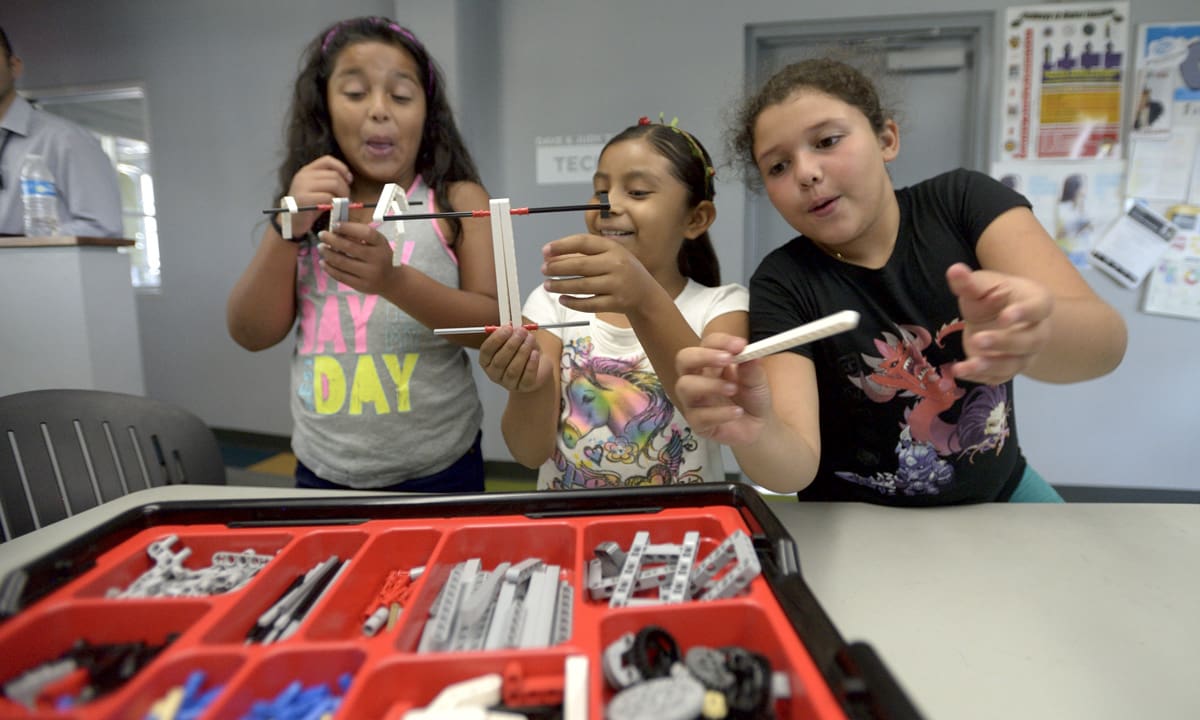Originally published on The74.
K-12 education needs to be rethought and redesigned: The engine for STEM learning is curiosity and imagination.
Curiosity is king. Students start their educational journey curious, creative and thirsty for knowledge. This is what drives STEM, particularly science. Our job is to cultivate that and not let a standardized approach to education quash those highly valued traits of a learner.
The world is dependent on innovations, systems and equipment that are designed and sustained using science, engineering, technology and mathematics. This means the nurturing of STEM talent cannot be reserved for a slice of our student population but, instead, an essential component of every student’s educational journey.
It turns out, industry agrees.
Our colleagues in the semiconductor community report the need for curious and creative professionals who can work in teams to solve the toughest problems encountered in the fabs and labs of our most advanced workplaces.
Because innovation is happening at a quickening pace, readying students through the curriculum for every workplace scenario will be impossible. The ability to design solutions from scratch, in real time, is necessary to the innovation enterprise.
Whether this is perceived as an issue of equity or economics, the goal is the same: To value STEM knowledge in the same way we value reading.
K-12 needs to be rethought and redesigned or it will not only fail to meet the needs of a STEM-dependent world, it will fail to meet the needs of a unique generation of students who learns, thinks and engages with the world around them differently than any before.
Millennial and Gen Z parents are tech-integrated and experience-driven. Their children are hard-wired to be the same. Practically, this means they innately use technology to learn anytime, anywhere. But it also means they want to learn by doing. They consider technology their guide but want in-person engagement for connection, collaboration and support.
These were the trends and challenges we had to consider when designing ASU Prep. ASU Prep is a P-20 system of schools and educational services embedded in a larger learning enterprise at Arizona State University. The needs and preferences of our student body is what drives our iterative design. Students become masters in various learning domains from home, at a K-12 campus, on a university campus, at their parent’s workplace or even with peers at a coffee shop.
Thanks to the innovative K-12 policy environment in Arizona, students who can do a day’s worth of school work in less time can fill the remaining hours getting ahead in courses, catching up on concepts where they struggle, working, pursuing an interest in music, theater, Olympic sport or even launching their own small business.
Online learning should not be remote from people. We pair students with Learning Success Coaches to help students build personalized educational pathways into their desired future career. From kindergarten on, ASU Prep students build their own learning plans in concert with a guide and present it to their parents.
Our students are exposed to ASU courses as soon as they are ready and can take any of the 4,000-plus courses on the ASU catalog: in person, online or through our Universal Learner Platform. High school students at ASU Prep are applying their learning via paid internships and hybrid high school/university schedules.
It’s working. With graduation and college-going rates that exceed the averages and large numbers of students matriculating to STEM careers, we believe that we are the school system of the future. As part of ASU’s New American University, ASU Prep is wired like no other K12 system in the country and is poised to design and open access to a K12 model fit for the future of work.
We do all these things not to simply grow enrollment but to develop a knowledge base of what works to share with the broader community and the ASU teams that are increasing university enrollment in underrepresented communities.
Stakes are high for both our country and the families striving within. We embrace the efforts laid out in the New Essential Education Discoveries (NEED) Act to evaluate what is happening right now in the most innovative systems in the United States and apply those lessons rapidly for the benefit of all students.
There is brilliance in every household. We believe it’s our job to design new educational models that value curiosity and show every student that they do, in fact, have a path to a successful future.
Amy McGrath is an educator, vice president for ASU, and managing director of ASU Preparatory Academy, a system of schools and innovations designing new models for all learners.

